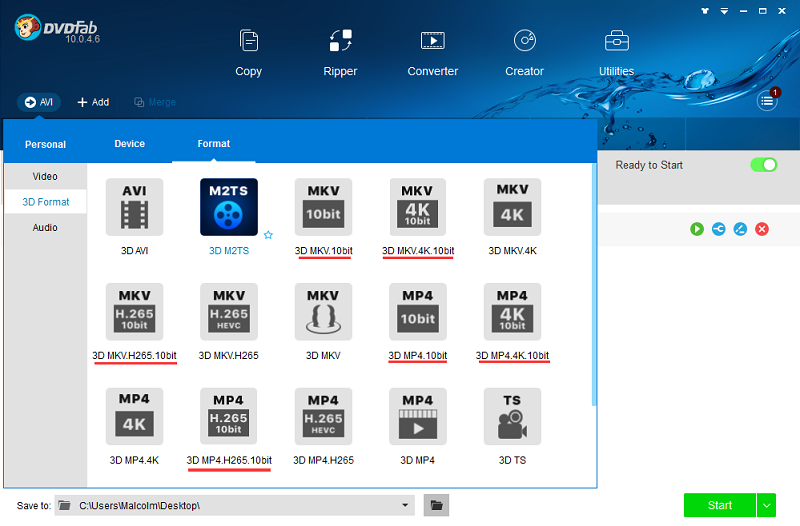10-Bit Profile
What is 10-bit color?
Before jumping directly into the jargon of 10-bit color, we need to first have a general idea about the bit depth of color. Technically, bit depth determines the number of colors that can be stored for an image whether it's a still picture or a frame from a video footage. Each image is composed of the basic red, green, and blue channels. Each channel can display a variety of shades of the appropriate color. The number of shades determines the bit depth of the image.
A 1-bit depth image means there are only two color shades per color channel. An 8-bit image means there are two to the power of eight shades for red, green, and blue. This is 256 different values per channel. When combining those channels, we can have 256 x 256 x 256 different color combinations, or roughly 16 million. Similarly, a 10-bit image can display 1,024 shades of color per channel, or billions of color combinations.

10-bit conversion profiles in DVDFab 10
Currently, the majority of desktop monitors, laptop screens, mobile device screens, or media projectors on the market are still displaying images with 8-bit depth. Only a few are capable of presenting images with 10-bit color depth. On the other hand, human eyes can barely see the difference between the 8-bit images and the 10-bit images. That said, if you do have a device, might be your smart TV or your projector, which is capable of displaying videos in 10-bit color depth, then you can use DVDFab, including DVD Ripper , Blu-ray Ripper , UHD Ripper and Video Converter , to convert your DVDs, Blu-rays and other videos with the 10-bit conversion profiles.

